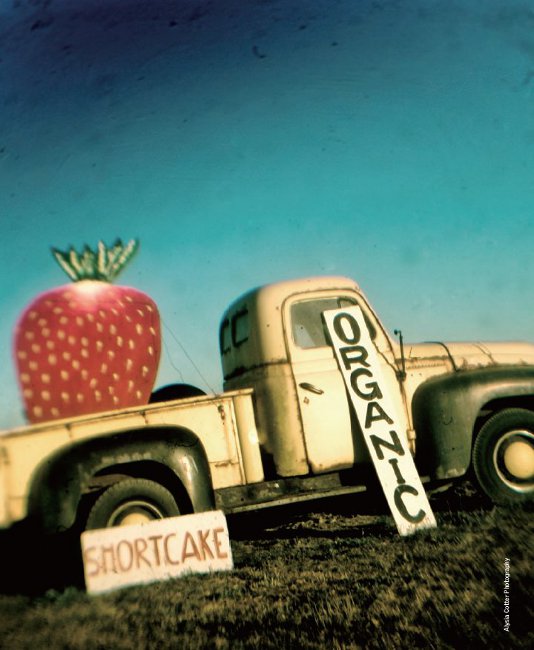
CHAPTER 8
GETTING
STARTED
Feeling adventurous? Good—let’s get into the nitty-gritty details of transforming your plate—and your palate. Over the next few days, embark on a sexy upgrade of your cabinets, fridge, and the shelf in the laundry room where you keep your secret vodka supply. Toss what no longer serves you.
When my pantry is stocked with a savvy stash, I’m stacked. If I open the fridge and see a jar of pickles and moldy bread—later ’gator, “We’re eating out!” On the other hand, when my kitchen is ready to meet me halfway with fresh, easy-to-prepare veggies, I am inspired to browse through my cookbooks, channel my grandmother (sans the Spam cake sandwiches), and play! I love those nights. My hubby and I dine on a healthy (candlelit) homemade meal brimming with Crazy Sexy love.
TOSS IT!
First things first—clear your cupboards of crap! I know that throwing away food can generate an awful feeling of waste. But if it’s bad in the first place, consuming it will be the biggest waste of all. Your body isn’t a garbage can! So fear not and go forward to the compost bin: All food products, and their paper wrappers, except meat, bones, and dairy, can be added to the compost pile. Use the vodka as an astringent on your face or an antiseptic to clean a scrape.
I understand that the Toss It list can seem like a scary game of trust. You know, that cheesy corporate bonding exercise where your comrades lock arms and catch you as you fall backward (if you’re lucky). Relax. If you get overwhelmed, take a deep breath and know that I will catch you, by recommending many lip-smacking treats, snacks, and veggie meals. I won’t leave you lying on the conference room floor, faking a meaningful bond with the slimy dude from HR.
How does this purge fit into the 60/40 plan? If you’re planning on including animal protein in your diet, make it the best you can afford, and cut back. I don’t think I said anything about eating 40 percent snack cakes, toaster pastries, and salami sandwiches on white bread with mayo topped off by a double caffeinated cola. Besides, if you’re ready to roll on the cleanse, temptation food has got to go—otherwise it’s not a … drumroll … cleanse!
What follows is a say-sayonara refresher of those items you need to get out of your kitchen and your life:
• Acidic energy drinks, coffee, soda, diet soda, flavored chemical waters, and booze.
• All refined sugars and artificial sweeteners.
• All processed starches, especially The Whites. This includes white table salt, which is heavily processed and stripped of important minerals, white rice, white bread, and white potatoes.
• Gluten. Be a self-detective and dump it for a while—if you notice that you feel a lot better without it, keep gluten on the nevermore list. If not, remember sprouted whole grain is always best.
• Dairy. It sucks, it’s gross, let it go.
• Eliminate animal foods or at the very least, reduce to no more than twice per week.
 TIP
TIP
Always, always light candles when dining. Make your meals sacred and sexy. Candlelight is flattering—no harm in looking like a starlet while noshing.
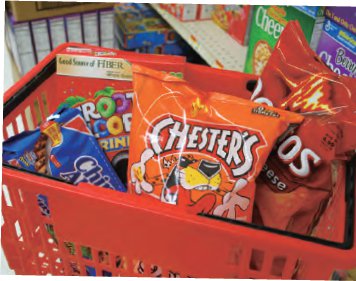
SHOP GIRL!
Done? Great! That wasn’t so bad, was it? Kinda liberating, in fact. Next up, we’ll create a detailed shopping list so you’ll have lots of yummy foods to choose on your mission. Planning ahead saves a ton of time and money because it helps you focus and cuts down on impulse buys. Slip into your sneakers with rainbow-colored laces and get to the grocer tout de suite!
In the beginning, filling your cabinets with healthy essentials may seem costly. Staples such as spices, oils, and seasonings are expensive, but they also last a long time. Once you make the initial investment, your weekly bills will decrease. Remember, spending a little more upfront will help you save in the long run—especially when it comes to preventable illnesses that drain your life force and bank account!
As you stroll the aisles, keep my favorite mantras in mind:
• If it has a shelf life longer than you, don’t eat it.
• If it was made in a laboratory, it takes a laboratory to digest!
• I am a Wellness Warrior, a divine banana, and I am worth this effort!
UNDERSTANDING INGREDIENTS
IN OUR “FOOD” with

Stefanie Sacks, MS, is a culinary nutritionist practicing throughout the Hamptons and New York and vicinity. She is dedicated to helping people live healthier lives by teaching them, handson, how to nourish themselves through proper food choices.

SHOPPING LIST
Here’s a short list of foods you’ll find in my personal cache—I think they’d look good in yours, too. Some are healing staples and nutritional prizefighters, while others are transitional foods for getting over the meaty, fatty hump. All are a diet upgrade. Again, you do not need everything! This is just a guide, a snapshot of my kitchen.
 VEGGIES
VEGGIES
Your new lifestyle calls for veggies, veggies, and more veggies! They are the centerpieces of your Crazy Sexy Diet. Cucumbers, broccoli, kale, collards, celery, parsley, cabbage, romaine, red lettuce, spinach, peppers, zucchini, asparagus, red peppers, chard, green beans, alfalfa sprouts, lentil sprouts, mung bean sprouts, sweet pea and sunflower sprouts, onions, garlic, leeks, cauliflower, winter squash, carrots, arugula, bok choy, sweet potatoes, parsnip, turnips … the list goes on! Have fun with your veggies—experiment with new tastes like kohlrabi, tat soi, and jicama. Mix and match ’em, try new seasonings, invent your own stir-fries, salads, soups, and stews. Oh, and invite me over for dinner.
 TIP
TIP
When navigating the grocery store, stay on the perimeter and avoid the middle! The perimeter is where the produce and fresh foods are found. Packaged foods are found in the middle of the store. When venturing into the inner aisles for grain, bread, and cereal, look up or down. The stuff at eye level is from big food companies that have paid big bucks for premium space. Less expensive small brands, plain old steel-cut oats, whole grains and organic pastas, and dried beans are often found below or above eye level.
 GLUTEN-FREE GRAINS AND NOODLES
GLUTEN-FREE GRAINS AND NOODLES
Whole grains (gluten-free, if you’re sensitive) are a big part of the Crazy Sexy approach. Good choices: millet, quinoa, buckwheat, brown rice, wild rice, amaranth, and teff as whole grains or pastas, 100 percent buckwheat soba noodles (most brands contain wheat), Tinkyada rice pasta, Ancient Harvest quinoa pasta. Oats are fine even for the glutensensitive or those with celiac disease, as long as they are from a safe brand (one that processes oats in equipment that does not process grains containing gluten).
 GLUTEN AND NON-GLUTEN BREADS AND SNACKS
GLUTEN AND NON-GLUTEN BREADS AND SNACKS
Gluten-free doesn’t mean bread-free or snack-free. You have lots of great choices here. Food for Life Baking Company makes yumalicious gluten-free breads and wraps. If gluten doesn’t bother you, check out their sprouted Ezekiel breads and cereals. Other gluten-free products: corn tortillas, mochi, and other brown rice products. I love the brown rice crackers made by Sesmark, San-J crackers, and Edward & Sons. Check out Glutino and Glutano snacks and Pamela’s Products for cookies, dessert mixes, and pancake mixes. Whole Foods makes a gluten-free line as well. Just read the labels, because some of the foods contain milk and eggs.
 BEANS AND LEGUMES
BEANS AND LEGUMES
Chickpeas, lentils, adzuki, white beans, black beans, limas, and pinto beans are the easiest to digest. Soak dried beans overnight in twice as much water as beans and add a ½-inch strip of kombu (seaweed) to the soaking water. This helps cut down on your methane expulsion! So does discarding the soaking water and rinsing the beans before continuing on with your recipe. If you don’t have the time to soak beans, Eden brand canned beans are a good alternative. Other brands contain preservatives, but Eden uses only beans, kombu, salt, and water. Rinse before using to remove up to 40 percent of the added salt.
 SOUP’S ON!
SOUP’S ON!
Fresh warm soup is a staple for people transitioning to the Crazy Sexy Diet—especially for those who live in colder climates. Make your soups tasty and hearty by using beans and a variety of veggies, especially root veggies like parsnips, celery root, yams, blue potatoes, carrots, and turnips. Add fresh herbs, lots of garlic, onion (or chives or scallions), a little olive oil, and Celtic or Himalayan sea salt. Don’t worry about recipes. Just throw everything in a pot, cook until the beans and roots are tender, and season to taste. I add Pacific Foods organic vegetable broth or Rapunzel brand vegan bouillon. Miso soup is another healthy staple. Miso makes a great base for a soup with vegetables and soba noodles.
 FRUIT
FRUIT
Avocados and tomatoes (yup, technically they’re fruits), apples, lemons, limes, grapefruit, pears, grapes, and berries are all good choices. While fruits are a healthy choice, low-glycemic fruits (those that are less sweet, like blueberries) are better for your blood sugar (check chapter 3 for a glycemic index refresher). Remember that fruit in general is slightly acidifying. You don’t have to skip it—fruit is very cleansing, loaded with vitamins and minerals, and it makes a satisfying snack or dessert. Just go easy. Two or three servings (half a large grapefruit, one medium-size apple, a cup of berries) are plenty per day.
 SWEETENERS
SWEETENERS
Stevia, yacón syrup, and agave syrup are my favorite alternatives to sugar. Stevia and yacón don’t affect your blood sugar; agave raises it only slightly, but not as much as sugar does. Stevia is actually an herb from a plant in the chrysanthemum family that grows in Paraguay and Brazil. Be aware that a little goes a really long way—this wonder plant is about 300 times as sweet as sugar. It comes in packets or as a liquid; brand names include SweetLeaf.
Yacón syrup is made from a tuber that grows in the Andes mountains of Peru. The syrup tastes sorta like molasses and is loaded with minerals such as potassium. Agave syrup (also sold as agave nectar) is made from the agave plant, mostly found in Mexico. It’s the same plant that gives us tequila, but there’s no worm in the bottle of agave syrup (dang!). Agave contains minerals such as iron and magnesium.
 FLOURS AND MEALS
FLOURS AND MEALS
If you can tolerate gluten in your diet, go with organic, stone-milled, whole-grain flours (stone milling preserves the bran, nutrients, and natural oils in grains). If gluten is a no-no, then you still have an amazing array of alternatives: amaranth flour, black bean flour, flaxseed meal, potato flour, oat flour, quinoa flour, millet flour, nut flour, and more. Check out Bob’s Red Mill at bobsredmill.com to get an idea of what’s available. Need gravy? Arrowroot and kudzu powder make terrific thickening agents.
 ALTERNATIVES
ALTERNATIVES
Cutting back or eliminating dairy products is easier than you might think. Rice, almond, oat, and hemp milk are my personal favorites as alternatives to dairy. You can make your own nut milks, too, and I’ll show ya how in a hot minute.
Brooklyn-based Dr. Cow (dr-cow.com) nut “cheeses” are fabulous for special occasions, and they’re probably the healthiest of all the faux cheeses on the market. You will lose your mind! Pair their cheeses with oil-cured olives and you’ve got yourself a really sexy hors d’oeuvre. Another good brand to know about is Eat in the Raw. They make a terrific Parmesan-like food from nuts; it’s supertasty on top of pasta, salad, and sautéed veggies. Daiya cheese is another alternative. This tapiocabased “cheese” melts like the real thing. It’s great for the occasional vegan quesadillas, lasagna, and grilled cheese sandwiches. Earth Balance Natural Buttery Spread kicks dairy butter’s ass! For a good mayonnaise alternative, try Nayonaise or Vegenaise. You can also make your own raw version with cashews!
 EGG REPLACERS
EGG REPLACERS
Eggs are the Elmer’s glue of cooking—they make things hold together. But you can find great standins in the form of soft tofu, mashed bananas, arrowroot powder, cornstarch (1 tablespoon dissolved in 2 tablespoons water for each egg), and chickpea flour. You’ll need to experiment a bit to see what works best in different recipes. You can also try Ener-G Foods’ egg replacer for baking jobs. Do stay away from processed egg substitutes meant to be low in cholesterol—these things contain egg whites and chemicals and aren’t really food.
 TIP
TIP
As soon as I get home I wash my veggies, let them dry, and then place them in those emerald-green lifesavers: Debbie Meyer Green Bags (greenbags.com). Bag your veggies, but skip the ties. Oxygen circulation: good for all life-forms. This helps them stay crisp longer. My hubby likes to prep the juice ahead of time—these bags make it really easy. We call them juice packets, and they’re always ready to go when we want a splash of Green Goddess love! Wash and reuse the bags to cut down on planet waste.
 MOCK MEATS
MOCK MEATS
Okay, let me be honest. I think of reproduction rump roast, tofu-turkey, and other pretend meats as methadone for tush eaters who are trying to quit the carnivore habit. This stuff is highly processed, and too much of it defeats the purpose of living a veggie lifestyle. However, some mock substitutes are healthier than others, and if you are having trouble transitioning, meat substitutes serve a valuable purpose. They get you over the hump, or in this case, the rump (roast). Here are my favorites:
• Gardein (gardein.com) is a dynamic new company that makes wonderful meat-like products (though they do contain gluten). Gardein makes everything from buffalo wings to beef skewers. My personal favorites are the Chick’n Scallopini and beefless tips.
• Sunshine Veggie Burgers (sunshineburger.com) are wheat-, gluten- and soy-free, and delicious. Gardenburgers (gardenburger.com) are a great brand as well, but read the package carefully. A few of their products contain dairy.
• Field Roast Grain Meat Company (fieldroast.com) makes yummy grain-based “meats” including sausages, cutlets, and even holiday meat loaf. Their smoked-apple sage sausages are delish.
• Check out Lightlife brand (lightlife.com) for tasty tempeh bacon, and use their Gimme Lean to make outstanding mock meatballs. Isa Chandra Moskowitz has a fabulous recipe in her cookbook, Veganomicon (also included in my resources section).
• Morning Star Chik’n Strips (morningstarfarms.com) are pretty darn fabulous too, especially on a Caesar salad. They do contain some gluten.
As much as possible use soy products that are close to their whole form. Soybeans, edamame, tempeh, and moderate amounts of tofu are your best choices. And if you’re down on soy altogether, don’t fret! There are many wonderful raw, nut-based meat-substitute recipes out there as well.
 TIP
TIP
Soaking raw nuts in water for a few hours makes them more digestible; it removes the natural enzyme inhibitors that keep them from spoiling.
 NUTS AND SEEDS
NUTS AND SEEDS
Nuts and seeds are an important part of the Crazy Sexy Diet. These little gems are packed with vitamins, minerals, good fats, protein, and fiber. Your options include: almonds, pecans, walnuts, macadamias, hazelnuts, pine nuts, pumpkin seeds, flaxseed (use a small grinder for these or buy them already ground), sesame seeds, hemp seeds, chia seeds (these make yummy cereal and puddings), and sunflower seeds. For spreads, try raw almond butter, cashew butter, and tahini (made from sesame seeds). Always buy fresh raw nuts and store them in the fridge or freezer; roasted nuts go rancid much more quickly.
Peanuts and peanut butter can be kinda sketchy. The plants are usually heavily sprayed with pesticides. Even organically grown peanuts can harbor mold, including dangerous kinds that give off toxins called aflatoxins. If you enjoy peanut butter, buy organic, and eat it in moderation.
 SEASONINGS
SEASONINGS
Fresh and organic seasonings are best, but dried herbs are fine, too. My staples are pretty simple: Celtic or Himalayan sea salt, Herbamare (sea salt and herbs), dulse flakes, wheat-free tamari, Bragg’s Liquid Aminos, ginger powder, garlic powder, basil, parsley, cilantro, mint, dill, rosemary, thyme, black pepper, curry, turmeric, cinnamon, cayenne, mustard seeds, and wasabi. Spice Hunter (spicehunter.com) makes fun blends. My favorite is a peppy, salt-free mixture called Zip. Pumpkin spice and apple pie seasoning, vanilla bean, or alcohol-free vanilla extract are great to add to smoothies.
 FERMENTED FOODS
FERMENTED FOODS
Naturally fermented foods such as raw (vinegarfree) sauerkraut and kimchi are high in good bacteria; they’re also a good source of B vitamins. They must be raw, however. Pasteurization kills life (good and bad), destroys enzymes, and reduces the nutrient content. Another reason a plant-based diet loaded with complex carbs and raw fruits and veggies is so great for you is that their fibers act as prebiotics. Prebiotics are the food your probiotic bacteria dine on. This nourishment makes them strong and healthy, allowing them to multiply and keep their king-of-the-roost status in your colon. Valuable fermented foods include Bragg’s organic unpasteurized apple cider vinegar, tempeh, raw sauerkraut, and unpasteurized white miso (awesome in dressings, spreads, and soup). Nutritional yeast gives dishes a cheesy flavor—it’s a lovely substitute for Parmesan. Nutritional yeast is the only form of yeast that I use in cooking and prepping. It’s not the same as the yeast used to make bread and shouldn’t be a problem if you’re dealing with candida.
 SEAWEED
SEAWEED
Seaweed is loaded with minerals and flavor. I especially love to make raw or cooked nori rolls, a mouthwatering mineral delight. Here’s another great tip: Plop leftover veggies and grains on a nori sheet, wrap, and zoom. Popular seaweeds include dulse (great on top of salads), arame, hijiki, and wakame (add this one to miso soup).
 DRINKS
DRINKS
My favorite replacements for soda, sugary pasteurized juices, coffee, and other drinks are purified water with lemon, herbal teas, green tea, white tea, yerba maté, kukicha, chai, kombucha, and coconut water. Fruit water is also delicious. Toss purified water and one piece of fruit with a dash of stevia in your blender. Blend and strain. Add ice. Yum! My favorite is strawberry with a mint sprig (sometimes I add a splash of sake—shhh, it’s our secret!).
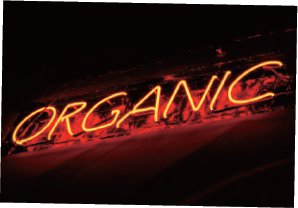
 TIP
TIP
Nutritional yeast is a good source of protein and many brands are fortified with vitamin B12. Add it to your food—atop air-popped popcorn, salads, pasta, veggies—you name it! Nutritional yeast is found in the bulk food or supplement section of most health food stores.
GOOD SNACKS,
CHOCOLATE,
AND EASY CHOW
You’ll be amazed at all the great snack foods you can eat on the Crazy Sexy Diet. Stuff like brown rice cakes, flax crackers, fresh salsa (made with lemon or lime juice), hummus, guacamole, Guiltless Gourmet tortilla chips, oil-cured olives, and air-popped popcorn are all easy to find in the supermarket or make yourself. For emergency snacking and last-minute meals, I like organic veggie burritos and cheese-free pizzas from Amy’s Kitchen (amyskitchen.com). Chocolate bars, anyone? Dagoba (dagobachocolate.com) and Green & Black’s (greenandblacks.com) are two high-quality, affordable, and tasty brands. Carob is also a terrific choice, especially because it doesn’t contain any caffeine. Goldie’s Carob Bars (goldies carobbars-ny.com) are my personal favorite. How about something creamy and dreamy like ice cream? Check out Turtle Mountain (turtlemountain.com) Purely Decadent coconut milk ice cream and Luna and Larry’s (www.coconutbliss.com) organic coconut bliss ice cream. They’re so good I could roar!
RAW AND LIVE TREATS
Once you start exploring raw foods, you’ll run across some really tasty raw snacks. For a good variety of fun raw food products, check out Lydia’s Organics, Foods Alive crackers, Lärabars, Just Tomatoes dehydrated veggies, and Ruth’s Hemp Foods (they make a great chia cereal, too). Products from Glaser Organic Farms are out of this world. I love their chickpea carrot croquettes and raw brownies. UliMana raw chocolate truffles (OMG!), Kookie Karma’s yummy raw cookies, and delish raw nut-based ice cream made by my pals at Organic Nectars are all a must!
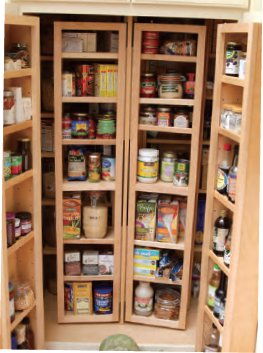
GOOD FATS
ARE FOXY
Every woman I know needs serious fat rehab. Fat is not the enemy, ladies (and gents). Sexy people eat healthy fats! The low-fat, fat-free craze made us rounder and turned fats into the Freddy Krueger of foods. Dump that nonsense and replace it with the mantra: Nothing tastes as good as healthy! And in order to be healthy, your sizzling body needs a moderate amount of good fats. (Just don’t go overboard.) Got it? Fantastic!
 TIP
TIP
It’s best to buy oils packaged in dark bottles and to store them in a cool dark place—this keeps them from oxidizing and going rancid.
Good fats assist in the absorption and transport of vitamins. They increase your metabolism and can actually help us lose weight in the process! Good fats are necessary for a strong immune system, hormone production, strengthening cell walls, joint lubrication, organ protection, a healthy nervous system, and proper brain function. In fact, it’s hard to be a smarty-pants without good fats. A highfunctioning happy brain is partly a result of the quantity and quality of fat you eat.
Bad fats—saturated and partially hydrogenated or trans fats—are the hip and health busters. If you’d prefer to avoid clogged arteries and cottage cheese thighs, then stay away from bad fats, fried fats, and fake fats.
Read the label on a package of just about any processed food, even frozen pizza, and you’ll see something called partially hydrogenated vegetable oil. Vegetable oil—that’s good, right? Not when it’s been heavily processed under high heat and pressure to make it partially hydrogenated, which is just another way of saying it’s been turned into trans fats.
When trans fats are manufactured, the fat molecules become distorted into shapes your body can’t even recognize as food. These nasty molecules create inflammation, cardiovascular harm, liver, kidney, and bowel stagnation, and an accelerated aging process. In short: Trans fats are a bitch. They’re so ugly that in 2006 New York City banned the use of trans fats in restaurants. Since then, many food manufacturers and restaurant chains have followed suit. Join them. Stay away from margarine and shortening (aka trans fats), commercial cooking sprays, and other heavily processed vegetable oils such as corn, canola, and peanut oil. They all wreak havoc on your system.
CHANGE YOUR OIL
Be Italian! Match up organic cold-pressed extravirgin olive oil with your veggies and let them make love. Flaxseed oil, hemp seed oil, walnut oil, and Udo’s Choice (a blend of healthy oils) are sexy sweethearts, too. They’re loaded with healthy omega-3 fatty acids—important for memory, reducing inflammation, and lots of other good stuff. More great salad oils include macadamia nut oil and avocado oil.
For cooking, choose olive oil (but use low heat), sesame, grapeseed, and coconut oil. Though technically a saturated fat, in a moderate amount coconut oil is terrific for you. It gets a bad rap when turned into a partially hydrogenated trans fat. But in its natural and unrefined form, coconut oil is healing and delicious. It’s about 50 percent lauric acid, the same wonderful substance found in breast milk, and boosts immunity.
Young Thai coconut meat is great, too. It’s loaded with good fats and many nutrients. Coconut water is also a fantastic source of electrolytes, and coconuts boost metabolism and have antiviral and antifungal properties. Add them to your smoothies and look out, world!
 TIP
TIP
Cooked oil is a source of free radicals. When cooking, make sure you use oils that are meant for medium to high heat, such as grapeseed oil or coconut oil. Or skip the heated oil altogether—do a water sauté or steam, and then add your oil afterward for flavor and nutrition. Certain oils like flaxseed and hemp seed are far too heat-sensitive and should never be used for cooking.

KITCHEN EQUIPMENT
Wellness Warriors don’t use swords. Instead, we fight with kitchen equipment! In addition to a good blender and juicer (check back to chapter 6 for recommendations), place the following essentials on your wish list.
 SLICING TOOLS
SLICING TOOLS
Spiralizers and Saladaccos are nifty gadgets that turn a big zucchini (or sweet potato or whatever) into spaghetti-like strands in about thirty seconds. Swap out the blades for slicing or grating. Ditto for a traditional mandoline slicer, which is fabulous for raw lasagna recipes.
Food processors rock! I love the Cuisinart, but any heavy-duty brand will do. Use a food processor for prepping ingredients that require a fine chop but still rely on some texture. A fast way to prep a salad is to use your greens as a base and then slice up a bunch of veggies in your food processor to top.
 KNIVES
KNIVES
Good knives are the foundation of any kitchen. Select brands and sizes that suit your gorgeous hands and keep them sharp. My favorites are made by NHS, a Japanese company. Their rectangularshaped vegetable knife is awe inspiring! You may also want to invest in a cleaver for opening coconuts. Just watch your digits, cutie.
 COOKWARE
COOKWARE
Please avoid using Teflon or other nonstick cookware—the nonstick lining is a carcinogen and can come off into your food at high temperatures. I like cooking in stainless-steel pots and pans. Clay pots and cast iron are good, too. Also—though they’re not cookware items per se, but small appliances—it’s best to avoid microwaves. Too many researchers and scientists have studied the process food goes through when it’s microwaved to make me feel comfortable about using one in my home. For instance, Dr. Hans Ulrich Hertel, now retired, worked as a food scientist with one of the major Swiss food companies that do business on a global scale. He found that microwave cooking degraded food. Other researchers have found similar results in controlled studies: Microwaves changed food’s nutrients so that changes took place in the participants’ blood that could cause deterioration in human systems. No thanks!
 COFFEE GRINDER
COFFEE GRINDER
Lay off the java, but save that grinder. It’s great for grinding spices, nuts, and seeds.
 NUT MILK BAG
NUT MILK BAG
Making your own nut milks is easy and saves a lot of money over buying prepared brands. Here’s how it works: Place 1 cup of soaked nuts in the blender with 2 cups of purified water. Whirl until smooth. Pour the mixture into a nut milk bag and squeeze! You can also grow sprouts in these bags, which is why they’re often sold under the name sprout bags. A down-and-dirty nut milk recipe goes something like this: 1 tablespoon of raw almond butter, 1 to 2 cups of purified water, stevia, vanilla, and cinnamon to taste. Ya don’t even need the bag for that one!
 FOOD DEHYDRATOR
FOOD DEHYDRATOR
This machine is optional, but food dehydrators allow you to make fancier raw cuisine and are really helpful if you have a vegetable garden or belong to a community-supported agriculture (CSA) farm. They’re also great if you have kids—for some reason they love watching vegetables dry. Once dehydrated, surplus veggies can be stored and enjoyed for quite some time. Excalibur makes a good one that’s easy to use.
 VACUUM SEALER
VACUUM SEALER
If you plan to freeze fresh local food for out-ofseason use, I recommend a vacuum sealer. Air is the enemy of food in the freezer. It causes freezer burn, deterioration, and nutrient loss. FoodSaver’s MealSaver Compact Vacuum Sealing System is a sturdy, affordable machine.
 ADDITIONAL GADGETS
ADDITIONAL GADGETS
Other essentials for the Crazy Sexy kitchen include a salad spinner, strainer, vegetable peeler, measuring cups and spoons, garlic press, spatulas, large salad bowls, large cutting board, and glass mason jars with lids. I like to use the latter to store grains and to carry juice. Stainless-steel containers are a great way to tote water but get kinda stinky with juice.
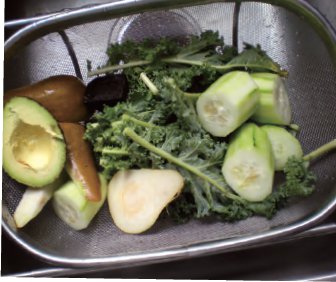
CUTTING COSTS
A mostly raw, organic lifestyle costs a bit more—or maybe not. Look at what you would likely spend if you ate three meals a day at the popular drive-through feeding trough known as McDonald’s.
Even though I’m not a big fan of counting calories, that works out to about 2,200 calories, about 400 more calories than the average adult woman needs. I can certainly eat very well, and quite healthfully, for $19.70 per day, especially if I lovingly prepare the food myself. Plus, eating out takes a toll on me, even when it’s good food. Simple Kris-style food makes the healing difference for my God pod. It’s easy, it’s cozy, and it’s all yours.
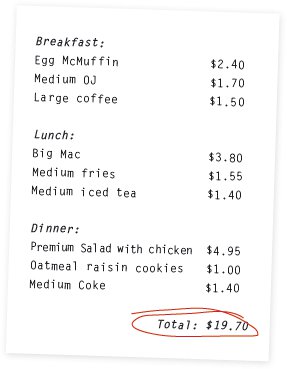
SUPPORT YOUR
LOCAL FARMERS
Farmers’ markets and farm stands are a great way to get the freshest fruits, veggies, and other locally grown products. Not every small farmer has done all the piles of paperwork necessary to be “officially” organic, but that doesn’t mean they aren’t—many use sustainable methods. Do a little research so that you feel confident that the food isn’t full of artificial fertilizers, insecticides, and hormones.
If you get to the market first thing, you’ll have the best choices—but if you wait until the last half hour or so, you’ll get the best bargains. Packing up is a drag, so the farmers are usually willing to haggle (a blood sport in my family).
BUY THE FARM
Well, not the whole thing, just a sweet little piece of it. I followed in my mom’s high-heeled steps and joined a nearby farm offering community-supported agriculture (CSA). Why? Because when I asked the lady at the CSA farm how many cucumbers I could have, she said, “As many as you want.” I nearly orgasmed (in front of my mom, which was … awkward)! “As many as I want? Mom, get the truck!” Since I juice about twenty-one-plus cukes per week, CSAs are better than Christmas, better than Saks!
Your CSA share buys you tons of peas and peace for months. And you don’t just get the standards. Unusual chlorophylls, like garlic scapes and kohlrabi, are abundant. Flowers, too! Here’s how it works: You buy an advance share of the produce the farmer plans to grow. When the crop starts coming, you swing by the farm and pick up your share on a designated day. It’s just amazing what a share gets you. In fact, your portion might be too much to get through. If that’s the case, find someone to go halfsies.
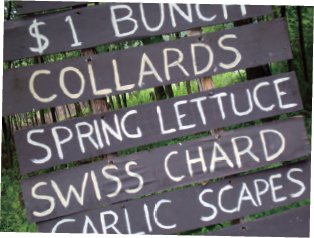
Want to find a CSA farm near you? Ask at the local farmers’ market and farm stands, and also check localharvest.org, a great Web site for tracking down CSAs and local farms.
YOU GROW GIRL!
If you really want to know where your food is coming from, grow it yourself. It’s surprisingly easy to sprout your own beans, grow your own wheatgrass, and raise an herb garden on a windowsill. Tomatoes, cukes, zucchini, lettuce, herbs—they’ll grow like crazy on a patio or on that favorite urban perch, the fire escape. If you have a yard, consider turning part of it into a Crazy Sexy victory garden.
Think of it this way: A packet of cucumber seeds costs about two bucks. Plant just half the packet (unless you want them to take over your neighborhood), water, give them an old piece of trellis to climb, and about forty days later you’ll see tons of cukes. Not bad for a buck. Even a small garden can give you hundreds of dollars of produce each season for very little investment. Plus, you save money on your gym membership. Pushing a wheelbarrow really tones the ass!
FROSTED FOLLIES
Another big money saver is buying frozen veggies and fruits (or vacuum sealing and freezing your overflow from the CSA). Because these foods go straight from field to frozen right after picking, they can actually contain more nutrients than the fresh versions that have spent a week (or more) in transit on their way to the store. Look for organic brands (Cascadian Farm is widely available in conventional supermarkets) for frozen berries for smoothies and frozen veggies for soups, stews, and casseroles.
BULK UP
Buying in bulk is one of the best ways to save. Warehouse clubs like Costco and Sam’s Club now carry a lot of organic produce, and the prices are very good. Okay, these stores are big corporate monsters, but when the farmers’ market is closed for the winter, they’re the way to go. Plus, when you buy organic at these behemoths, it sends an important message. Organic food rules! The package sizes are large, but you can always freeze what you don’t use or share it with a pal. If you have time to volunteer, food co-ops are another good way to save through bulk buying. To locate one, go online or ask around at the health food store.
 TIP
TIP
Try to shop several times per week (around two or three visits). This way your veggie supply won’t spoil if Lady Gaga suddenly invites you to Europe. Creative smoothies or blended soups mop up the extra produce that would otherwise go bad. Be thrifty, lady. Would it be more fun to use exactly what you want when you want it? Duh, of course! Sometimes I find myself going to the store because I’m missing a specific ingredient, but I’ll come out with $50 worth of other stuff that “I might as well get while I’m here.” If I could resist the urge, I’d be forced to use the wonderful foods I already have.

GETTING THE BEST FROM
CONVENTIONAL FOODS
Of course, we all want to buy only organic, but that’s not always possible. Fortunately, not all your fruits and veggies need to be organically grown to be relatively safe. Wash all conventional veggies well. You can also soak them in a little white wine vinegar or food-grade hydrogen peroxide (you can buy this online or at the health food store—it’s not the same as the hydrogen peroxide sold in the pharmacy, do not use that!). Since agricultural chemical sprays stay on the surface of the food, be sure to peel certain produce to remove any residue. Check out the following advice to guide you.
THE DIRTY DOZEN AND THE CLEAN FIFTEEN
When buying veggies on a budget, choose the conventional option from the Clean Fifteen and try to go organic for the Dirty Dozen. What’s that? It’s a handy list put together by the Environmental Working Group (EWG) that will educate you on produce grown with the least and the most amount of pesticides. Here’s the list of worst offenders and best choices:
THE dirty DOZEN
Foods grown with the most pesticides, ranked from worst to less bad
1. Peach
2. Apple
3. Bell pepper
4. Celery
5. Nectarine
6. Strawberries
7. Cherries
8. Kale
9. Lettuce
10. Grapes (imported)
11. Carrot
12. Pear
For more information about the list, check the EWG’s Web site at foodnews.org or ewg.org.
THE clean FIFTEEN
Foods grown with the least amount of pesticides, ranked from best to not-so-good
1. Onion
2. Avocado
3. Sweet corn
4. Pineapple
5. Mango
6. Asparagus
7. Sweet peas
8. Kiwi
9. Cabbage
10. Eggplant
11. Papaya
12. Watermelon
13. Broccoli
14. Tomato
15. Sweet potato
EATING OUT with

Kathy Freston is a health and wellness expert and best-selling author of Quantum Wellness.
EATING SANELY
If every dazzling person would make just a few changes, just think how much healthier we could be. Our planet would thank us; the animals would lick us. That’s the goal, my friend. Do the best you can and if you stumble, don’t marinate in guilt. Get back on the shiny wagon and start anew. Also, don’t break your bank trying to get healthy. Slowly upgrade and add as finances allow. Life is too sweet to be bitter, so just do your best. No beating, anxiety, or neurosis, por favor.
 testimonial: Michelle D.
testimonial: Michelle D.
Recently I went to a naturopath out of desperation because I had been living with tummy trouble for five years, since my diagnosis of juvenile diabetes, and no MD seemed able to help me. I soon realized that although what I was eating was healthy by SAD standards, I had changes to make. Evolution, not revolution: It has been a gradual process. In the last year I’ve been almost vegan. The support and information I have received from Kris’s Web site, crazysexylife.com, has helped me to solidify that commitment. I feel like veganism is necessary for my physical as well as spiritual and emotional health. During her cleanse I gave up the occasional chicken and fish I had continued to consume every week or so, added in more salads and other raw food, stopped making (and craving) sweets, and finally began to use my juicer.
Although I had already been doing green smoothies every morning, and eating a plant-based diet, this fine-tuning led to some detoxing. I was surprised to get symptoms like headaches and pimples, since I thought my diet was already so clean! It just goes to show how sensitive our systems are, and how they need all the help they can get. The Crazy Sexy Diet has helped me to better understand the importance of being alkaline, fighting disease with nutrition, and living the very best, most vibrant life I can.
CHAPTER  IN REVIEW
IN REVIEW
REMEMBER:
 Clean the crap from your cupboards and learn to shop smart. Even a 60/40 diet means high-quality food!
Clean the crap from your cupboards and learn to shop smart. Even a 60/40 diet means high-quality food!
 Get to know your Crazy Sexy shopping list, crammed full of produce, grains, beans, nuts, seeds, seasonings, fermented goodies, great fats, and much more.
Get to know your Crazy Sexy shopping list, crammed full of produce, grains, beans, nuts, seeds, seasonings, fermented goodies, great fats, and much more.
 Stock your kitchen with the right tools to make meal prep a snap—and fun, too.
Stock your kitchen with the right tools to make meal prep a snap—and fun, too.
 Get cozy with your greengrocer, farmers’ market, and local food co-op.
Get cozy with your greengrocer, farmers’ market, and local food co-op.
 Grow your own grub—at least an herb garden or a patio tomato. Even city girls can raise wheatgrass and basil.
Grow your own grub—at least an herb garden or a patio tomato. Even city girls can raise wheatgrass and basil.
 Familiarize yourself with the Dirty Dozen and Clean Fifteen.
Familiarize yourself with the Dirty Dozen and Clean Fifteen.
 Eat out with ease—don’t be a bore, but do make the right choices without fanfare.
Eat out with ease—don’t be a bore, but do make the right choices without fanfare.